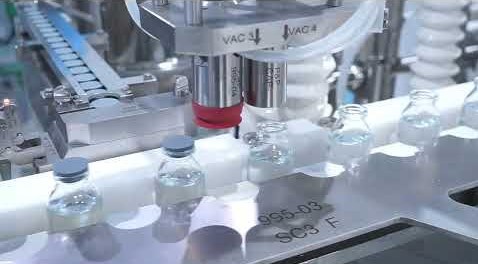Stoppers for Pharmaceutical Fill Containers
Stoppers are commonly used in the pharmaceutical industry to seal and close containers, particularly for
parenteral (injectable) products. Stoppers play a critical role in maintaining the integrity and sterility of
the filled product. Here are some key points regarding stoppers for fill containers:

-
Material Selection:
Stoppers are typically made of elastomeric materials such as rubber or synthetic polymers. The selection of
the stopper material depends on factors such as compatibility with the product, container closure system
requirements, and regulatory guidelines.
-
Closure System Compatibility:
Stoppers must be compatible with the closure system used for the containers. This includes considerations
such as the stopper size, shape, and design to ensure proper fit and sealing.
-
Closure Integrity:
Stoppers should provide an effective barrier to prevent contamination and maintain the sterility of the
product. They should create a secure seal with the container, preventing the ingress of microorganisms,
moisture, and other contaminants.
-
Compatibility with Filling Process:
Stoppers should be suitable for the specific filling process and equipment used. They should be able to
withstand the filling pressure and handling during the filling operation without compromising their
integrity or introducing particles or contaminants.
-
Quality and Inspection:
Stoppers should undergo quality control and inspection processes to ensure they meet predefined
specifications and standards. This may include visual inspection for defects, dimensional checks, and
physical property testing.
-
Validation and Qualification:
The qualification and validation of stoppers may be necessary to ensure their suitability for use in the
specific filling process and product. This may involve testing for factors such as extractables and
leachables, compatibility with product formulations, and performance under various environmental
conditions.
-
Regulatory Compliance:
Stoppers used in pharmaceutical fill containers must comply with relevant regulatory requirements, such as
those outlined in pharmacopeial standards (e.g., USP, EP) and regulatory guidelines (e.g., FDA, EMA).
Compliance with good manufacturing practices (GMP) is essential to ensure the quality and safety of the
finished pharmaceutical products.
It's important to work closely with the stopper supplier and follow appropriate industry guidelines and
regulatory requirements when selecting and qualifying stoppers for fill containers. Collaboration with
quality assurance, regulatory, and validation teams is crucial to ensure that the stoppers meet the necessary
quality standards and contribute to the overall integrity of the filled pharmaceutical products.